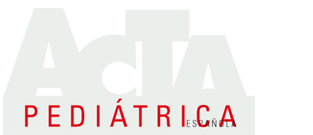Volumen 72 - Número 8 - Septiembre 2014
Publicado en
Originales
Programa de transición de nefrología pediátrica a la medicina del adulto: «Conduce tu salud»
Pediatric nephrology transition program to adult medicine: "Conduce tu salud"
C. Vicente Calderón1, V. Martínez Jiménez2, J.A. Piñero Fernández1, M.F. Sánchez Sauco3, I.M. Saura Luján2, R. Luján Villaseca1, J.A. Ortega García3; en nombre del Grupo de Transición*1,2Sección de Nefrología Infantil. 3Unidad de Salud Medioambiental Pediátrica. Servicio de Pediatría. Servicio de Nefrología. Hospital Clínico Universitario Virgen de la Arrixaca. Murcia














